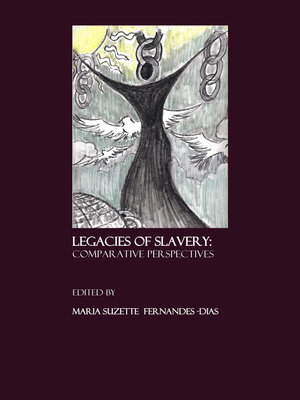
Sign up to save your library
With an OverDrive account, you can save your favorite libraries for at-a-glance information about availability. Find out more about OverDrive accounts.
Find this title in Libby, the library reading app by OverDrive.



Search for a digital library with this title
Title found at these libraries:
| Library Name | Distance |
|---|---|
| Loading... |
The proclamation by the United Nations General Assembly of the International Year to Commemorate the Struggle against Slavery and its Abolition during 2004 marked the culmination of recent efforts to re-engage with slavery's past and create an intellectual, social, political and ethical climate conducive to a sustained and meaningful dialogue among cultures and civilisations. The past decade witnessed an upsurge of national and international exhibitions and conferences on the impact of slavery and the overwhelming and enduring cultural miscegenation and the demographic, socio-political and spiritual hybridisation that the phenomenon consciously or unconsciously initiated; the celebration of efforts by Abolitionists to publicise the savagery of this inhumane practice; a revival of interest in and the glorification of, the often ignored or historically negatively represented resistance to slavery by slaves themselves; and, numerous endeavours to address the negative legacies of slavery like racism, racial discrimination, xenophobia and related intolerance, which continue to impinge upon our present as part of contemporary politics.
Yet, these ventures aimed at raising awareness of the horrors of slave trade and slavery, at honouring struggles for the emancipation of the enslaved, at examining the aftermath of slavery like the emergence of a new historic consciousness, at restoring broken links and solidarity between the historically dislocated diasporas and their countries of origin, at commemorating sites of memory, and, at celebrating artistic and cultural métissage, such as the UNESCO's Slave Route Project, have largely focused on the Atlantic World, and the deportation of slaves from Africa to other parts of the World, raising questions about the legacy of slavery in other societies, like those in Asia, the Pacific and Europe, where slavery still remains on the margins of national and post-colonial histories.
This edited volume is an attempt to reconsider slavery as a global human institution which has coexisted with other socio-political, economic, legal and cultural institutions. As a temporally and spatially ubiquitous phenomenon, it has generated and continues to, engender legacies, be they historical, oral or visual, which need to be compared and discussed to facilitate dialogue between cultures and civilisations and to mitigate the wounds of the past which continue to scar our present. It brings together writings by scholars from history, literature, anthropology and cultural studies who examine the indelible mark left by slavery in its various forms, on societies, cultures and peoples all over the world and attempts by artistes and writers to alleviate this stigmata of History.
This volume consists of two sections. The first section entitled "Connecting Histories" explores some of the varied forms in which slavery presented itself in the last four centuries and the need to reengage with its legacies. Adhering to Manning's contention that slavery is "an enduring metaphor for inequities in the treatment of humans", this section focuses on identifying the legacy of slavery and its significance in scholarship (Manning); alternate perspectives on slavery through the examination of forced labour and the dehumanising treatment of indigenous people in Australia (Read), enforced migration and labour exploitation of convicts in penal colonies (Maxwell-Stewart); and, a historical overview of Lusitanian slavery in India (D'Souza) and the hybridisation of pre-colonial slavery traditions in the perpetuation of the perkerniersstelse, or a profitably managed European settler-colony based on the global monopoly of nutmeg production, by the Dutch (Winn).
The second section...







